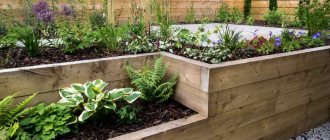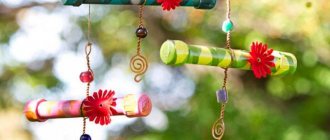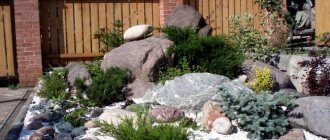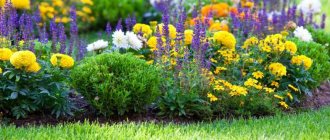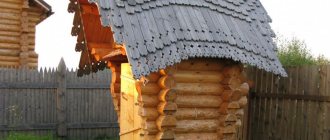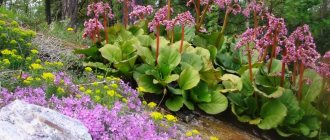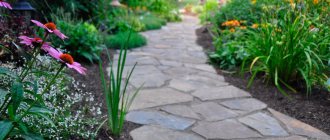Do-it-yourself vertical flower beds and flower beds are an excellent solution for decorating the local area. This landscaping option is especially relevant for owners of small garden plots, where every square meter matters. There are many varieties of original flower beds and flower beds, but vertical structures are the most popular. You can make them from any available means, the main thing is to know some of the subtleties of arrangement, follow the manufacturing instructions, and recommendations regarding their placement.
What are vertical flower beds
A vertical flower garden cannot be called know-how; this method of landscaping has long been successfully used by city services in many localities.
With the same success, a similar method of organizing flower beds can be used in private areas.
Even if the area allows and the territory pleases with rose gardens, flower beds and green plantings, vertical flower beds will add their own flavor to the organization of the landscape, allowing you to zone the area and focus attention on something.
To make raised flower beds, you will need some materials and a little imagination.
Design features
Any box, regardless of the material it is made of, is a capacious container. In this situation, this is a ready-made pot for planting flowers and ornamental plants. It is filled with soil, used alone or piled into a multi-tiered pyramid.
For a multi-tiered flower bed, it is optimal to use up to 6 drawers
It is important to remember that wooden and plastic containers are not particularly durable. Pyramids are created from no more than 5-6 elements. Otherwise, under the weight of the soil, the upper tiers will crush the lower base, and the structure will fall apart.
If you want to create an unusual flower garden, it is important to know the principle of its design. A few recommendations from professionals will help you cope with the task:
It is unwise to cram a flower bed with flowers with a variety of colors. The combination of bright and pastel colors looks beautiful.
Places for installing flower beds
For vertical compositions with flowers and greenery there are no frames limiting the size or shape, so they can be placed literally anywhere in the summer cottage:
- a cascading flower bed will decorate the entrance area to the house, to the terrace, to the gazebo;
- You can decorate the fence with boxes of flowers and greenery, making the border less official;
- a flowerbed hidden in a bush, cascading or vertical, will enliven the corner during the period when the flowering of the bush ends;
- tall towers will brighten up the corners of the site;
- Hanging flowerpots, in a certain geometric or chaotic order, will look elegant not only at the entrance to the house, but also on the wall, near the bench.
Depending on the type of construction, there are:
- wall;
- wall;
- ground;
- hanging flower beds.
In a word, any boring corner can be enlivened by arranging even a low vertical of several pots or flowerpots.
15 delightful ideas for arranging flower beds and flower beds that will decorate your dacha
Receive one of the most read articles by email once a day. Join us on Facebook and VKontakte.
It is up to the owners to decide whether to make the dacha a place for relaxation or for working on growing vegetables and fruits. Of course, the first option is much nicer. But in order for the dacha to truly become a place of relaxation, you need to take care of its design. A simple but effective way to decorate your garden plot is to arrange flower beds and flower beds on it. We share fresh ideas that will inspire stylish garden design.
Advantages and disadvantages
Vertical flower beds have their pros and cons. The latter are solvable and not so critical as to give up the idea of using original, fresh solutions in landscape design.
Advantages:
- saving space. Arranging pots or boxes one above the other allows you to place a large number of plants in a relatively small area;
- the proximity of crops that in the open ground interfere with each other or “are at enmity.” It's no secret that not all plants can be planted nearby. A completely natural struggle for minerals and water arises when the fittest survives. Vertical solves such problems;
- in pots or other containers planted with flowers, practically no weeds grow (especially if the soil has been prepared in advance), there are no pests;
- originality of construction and individual design will make the site different from others.
Flaws:
- a small volume of soil requires regular fertilizing;
- outside, the soil in pots dries out quickly, there is no groundwater, so frequent watering of the plants is required to maintain the beauty of the greenery and flowering;
- In winter, the roots of perennials left outside freeze very much. It is recommended to make the structure collapsible (containers with flowers are removable) in order to put them in the basement or cellar during the cold period.
Types of plastic fencing for garden beds
A whole range of ready-made products are offered on the market for fencing beds. Models differ from each other in physical characteristics and purpose. For their manufacture, special plastic is used, which does not emit toxic substances even after very long exposure to the sun.
Ready-made fencing for garden beds made of plastic can be purchased at any large hardware store. There are several types of such products:
Sometimes there is a separate category - decorative fencing. In fact, this is a type of plastic boards that imitate some natural material: brick, wood, wicker, bamboo.
Important! Each plastic bed model has soil restrictions. Thus, a garden constructor can be used on loose or loose soil, but a border strip requires a more durable base.
Types of vertical flower beds
Ideas for vertical flower beds can be gleaned from the Internet, but you should not limit yourself to ready-made forms: if you add imagination, you will be able to create your own, individual project.
flower tower
The flower garden, decorated in the “tower” style, has an absolutely stunning view. Strictly speaking, the shape of the tower can be any you choose: spherical, spherical, cubic, arbitrary. The main thing is that the tower is a figure filled with soil in which plants are planted. During the flowering period, it is completely covered with petals and the frame is not visible at all.
Flower ball
Special frames are sold for flower balls; you can build something similar with your own hands. The ball is filled with soil into which the plants are planted.
On the ground, the flowerbed will not look as advantageous as it does in limbo. During the flowering period, raised and suspended “balls” immediately attract attention.
Screen
As expected, a screen is used to disguise unattractive walls, boring buildings, or to zone a site. A wooden, plastic, metal “screen” planted with bright fragrant flowers will cope with its role perfectly.
Blooming pillar
The design resembles a “tower”, but unlike it, it has a strict cylindrical shape. The column can be organized in the form of a cascade, but, as a rule, it is a hollow cylinder with an organized irrigation system, planted with flowers.
Tunnel
The “tunnel” type design looks very original - high metal arches, “covered” with containers with plantings on top. Despite its unconditional beauty and originality, such a flower bed is very difficult to water; this must be taken into account in advance. Although, of course, the hanging species planted on the “roof” of the tunnel are a unique sight, such decor is used to organize various types of special events.
Hanging flowerpots
The simplest, and therefore the most common type of vertical flowerbed with your own hands is a support on which hanging pots with soil and plantings are attached. They can be placed anywhere on the site, using a fence, beams of a house or other buildings, even garden trees for the frame.
Build process
Assembly begins with the largest pot. It is filled with soil about 1/2. After this, a wooden or metal rod is placed in the center, onto which the remaining pots are placed from larger to smaller diameter, partially filling them with earth.
In this case, plants should be planted in a circle. As they grow, the pots will become less noticeable. Watering is carried out if necessary.
Posting rules
When creating a flowerbed, you should adhere to several recommendations. They will help make the design harmonious.
- You should not chase the abundance of species and number of plants. An overloaded flower bed looks sloppy, and flowers that are planted in vertical structures suffer from a deficiency of minerals and water. When planting plants, you need to make gaps of 5-7 cm between them.
- Three to five plant species for one “tower” is optimal.
- The colors of the buds should be combined and in harmony with each other, in addition, you need to think about whether the plants will bloom at the same time or replace each other.
- Gaps and voids can be disguised with the help of decorative elements, greenery, and grass.
- It is necessary to give preference to plant species with a shallow root system; they will do well in a limited space.
Bird drinker
This is one of the simplest and most striking projects. In summer, birds need water rather than food. A water bowl for birds can be made from a regular PVC tube, closed on both sides with caps. How to pour water into it? It is necessary to make 2 longitudinal holes in the tube and secure it in a horizontal position so that these holes are always on top. Then the liquid will not spill out of the drinker, and the birds will be able to drink to their heart's content. The drinking bowl can be filled with regular, sweet water or diluted syrup. And if you paint the pipe with bright paint, it can become a beautiful decorative element of the garden.
Types of purchased structures
Today, specialized stores offer a wide range of ready-made designs that allow you to quickly and easily make a vertical flower bed with your own hands. These include wooden multi-level “pyramids” that can be moved around the site; wooden “ladders” with pallets; decorative flower pots and stands; pallets, metal and wooden boxes of various sizes; metal balls made of wire.
If you wish, you can realize your own needs and fantasies by making a custom-made structure based on an individual project. The only negative is the cost of such structures. Therefore, summer residents simply make do with what they have at hand, turning even household garbage and waste into stunning flower beds.
Hose holder
Continuing the topic of watering, we cannot help but mention another useful invention for the garden, which can be made from PVC pipes - a hose holder. This easy-to-make device allows you to store the hose conveniently and easily move it around the site. At the same time, the rubber tube does not bend, break or get tangled underfoot.
How to make a vertical flowerbed with your own hands using improvised materials
Creating flower beds with your own hands at the dacha is not at all difficult. You can use everything that has long been asked to be thrown into the trash, but for some reason has not yet gone there. It's time to give old junk a second life.
From plastic bottles
Even first-graders know that plastic takes centuries to decompose. But if separate waste collection is organized in the city, when recycled plastic containers are recycled, then problems arise with this outside the city. And there are quite a few bottles of water and drinks collected in the country house. It's time to use them for a good cause.
- Five-liter drinking water bottles are very convenient. They need to cut off the neck or bottom (and turn them over by screwing on the lid) to create a wide, capacious container.
- Two-liter bottles are also cut to half (they often use half with a neck, hanging the lid down, such pots look impressive).
- The bottle can be placed horizontally by cutting out a spacious hole on one side for soil and planting flowers.
Bottles with plantings can be mounted on a fence, wall, or used to decorate a screen.
From the boxes
Boxes made of wood or plastic are naturally ideal containers for organizing a flowerbed with your own hands. Boxes of different sizes can be placed vertically on top of each other (after filling them with soil), and seedlings can be planted in the resulting gaps, thus creating a cascading flower garden.
If the boxes are the same size, then plants can be planted in the spaces between the slats or in the side holes.
The boxes can be placed on the ground, nailed to a wall, mounted on a fence, or used to make decorative “border” posts.
Made from metal mesh and garden film
If you cut off about a meter of chain-link mesh, cover it from the inside with thick plastic film or black spunbond, securing it in the corners, and then roll the mesh into a cylinder and connect the edges, you will get the basis for a high flower bed. You need to make holes in separate cells (in a checkerboard pattern) in which flowers will be planted.
The cylinder is placed in a wooden or plastic container (bucket) and firmly fixed (you can bury the bucket in the ground). You need to install a plastic pipe in the center, first drilling holes in it for irrigation and sealing the bottom hole (which will stand at the bottom of the bucket). The gaps between the walls and the pipe must be filled with soil mixture and flowers planted.
From geotextile
Geotextiles are a convenient material for making a vertical flower bed. The frame is made of reinforcement bars installed in a circle. On the outside, they are wrapped in several layers of geotextile; holes for seedlings need to be made in it in random order.
The watering system is the same as in a flowerbed made from a chain-link mesh: in the center there is a plastic tube with holes for water, with an insulated bottom edge. The space between the geotextile walls and the water tube is filled with soil. In both cases, it is recommended to make a drainage layer at the bottom.
From a pallet
Wooden pallets are a convenient, eco-friendly material that will last a long time faithfully. Pallets can be used to make a wonderful screen or raised flower bed.
In the first case, the pallet must be turned with its back (“legs”) forward, and using small nails or a furniture stapler, secure the geotextile folded in several layers so that it forms a bag. Pour soil into it and plant flowers.
Put together a kind of box from several pallets and plant flowers in it, raising them above the ground.
Pallets must be sanded and covered with a colorless or decorative protective material. You can decorate a flower bed made of wooden pallets with colored paints.
Using other items
By “other items” we mean everything that is lying around underfoot. For example, old shoes. Daisies will look great in rubber boots and galoshes nailed to the fence. Petunias will look great in an old umbrella turned upside down with its handle. Violets look very cute in small cups suspended one above the other. You just need to look around and use your imagination.
Watering cans, buckets, basins
There is also plenty of this goodness in the dacha! They can be raised above the ground by installing them on stands, stumps, steps, benches, or, on the contrary, dug into the ground.
You can also add old pots, deep frying pans, boiling pots and buckets here. The main thing is not to forget to water the plants. And remember that metal “flower beds” are subject to corrosion from contact with water, so you need to monitor their condition.
Tires and Tires
Car tires and tires are classics of country house decor; they have been used for a long time to fence flower beds.
But if you stack the tires on top of each other, or in some other order, and fill the voids with soil, plant plants, and you will get a vertical flower bed. Tires can be dug into the ground, hung on a tree, cut into two parts and attached to each of them on a wall (fence). Tires can be painted in different colors, braided with decorative cord, and turned into flowerpots.
Plastic pipe
You can make a pillar or tower from a plastic pipe of a suitable diameter: you need to cut holes in it in a checkerboard pattern (5-6 cm in diameter). Inside, in the center, place a pipe of smaller diameter with holes drilled in it.
Fix the structure in the ground, fill the pipe cavity with soil and plant the seedlings in the prepared holes. The inner thin pipe is designed for watering.
Pots and containers
It’s very easy to organize a vertical flower bed with pots and containers: they need to be secured in “floors” or in a cascade on a fence, wall, or wooden pallet; you can build a pole with hooks and hang pots; containers can be installed on special stands, shelves - in a word, you can give free space to your imagination. Pour soil into pots and containers and plant flowers. Bright colors of pots will make the flower bed attractive.
Barrels and containers
You can also organize a flower garden in wooden barrels and tubs. To do this, you need to install a watering pipe in the central part, fill the barrel with soil, cut holes in the sides with a diameter of about 5 cm and plant the plants.
Furniture fantasies
Do not rush to frown contemptuously. Yes, I agree, it’s difficult to call “box” furniture exquisite. But sometimes, as they say, I don’t care about fat, I wish I was alive. For example, to this day I remember my first dacha - 6 acres of peat bog with a barn trailer as a house. And the life of a young family after moving to a foreign city - when all the furniture in the apartment is only a sofa and a crib. So sometimes boxes can be a good help in arranging (even if temporary) a country house. Well, the owners of luxury cottages hardly look at this selection anyway.
Furniture made from boxes cannot be called elegant, but sometimes such a solution can help out
Cabinets, racks and shelves
These are perhaps the most common pieces of furniture made from plastic boxes. There are various models - for clothes, for books, for children's things, and for kitchen utensils. Boxes are a truly universal material.
Racks and shelves made from boxes can have very different configurations
By the way, it is not at all necessary that the boxes are the same and arranged in a strict order. The main thing is that the finished furniture is comfortable and durable.
Strict forms are not a prerequisite
If there are not enough boxes, you can combine them with boards. Just make sure that the design is reliable enough: not every box is suitable for such a solution.
If there are not enough drawers, combine them with other materials
Stools, tables and bedside tables
It can be more difficult to manage without a chair or at least a stool than without a bookcase, you must admit. But if you have strong drawers (such that they can certainly withstand the weight of a person), it is very easy to make this simple piece of furniture.
Making stools from boxes will not be difficult at all
Moreover, the design of the “box” stool, as you can see, allows for options: high or low, with or without legs, with plywood, wicker, soft seats... Everything is in your hands!
Stool from a box: options are possible
Well, since you already have stools , why not make a table. Or at least a nightstand
Making a bedside table is no more difficult than making a stool
And you can even aim for an entire “furniture set” if there are enough drawers:
You don’t have to limit yourself to just one stool.
Even if not for the home, such furniture is quite suitable for a country party with friends.
Sofas and beds
A sleeping place is another necessary attribute of any home. No, you can rest on the floor, of course... But it’s still more comfortable on the bed. Even if it is made from scrap materials - in our case, from boxes. Well, if you don’t want a bed, make a sofa on the veranda so that you have somewhere to sit during a break between dacha work and worries.
And a place to relax after dacha work can also be arranged using boxes
Boxes. Just boxes.
After all, you don’t have to make anything complicated at all. To neatly store toys or clothes in your dacha, you can use boxes without any additional tricks. Well, almost... We don't want to live like in a warehouse, right?
Simple decor will help transform unsightly drawers
A simple decor made from fabric, ribbons, yarn or other available materials will help turn an ordinary - not very attractive, frankly speaking - box into an independent and quite nice element of the decor.
Of course, this is not all that can be made from plastic boxes in the country, but I will stop, perhaps, adding to the proposed ideas just a few words about how not to make a mistake when choosing the material for their implementation.
How to choose suitable flowers for vertical flower beds
Choosing suitable plants is a crucial moment in organizing a vertical flower bed. The appearance of the flower garden and the corner where it will be installed depends on how correctly and successfully they are selected.
It is recommended to choose plants that are unpretentious, easy to care for, resistant to rain, drought, disease and temperature changes, do not grow very much, and have a shallow root system.
Annuals are preferable to perennials, despite the fact that seedlings will have to be grown every year. Especially if we are talking about a stationary flower bed without the ability to put the containers away in the basement or cellar for the winter. The root system of flowers freezes strongly and they may die. An exception can be made in southern regions with warm winters.
But the main thing is to select plants that will delight the eye with long, abundant flowering, bright or delicate buds.
Petunias
Classics of the genre - petunias. The variety of shades in which the bell-shaped petunia flowers are painted is amazing:
- white,
- soft pink,
- scarlet,
- lemon,
- raspberry,
- lilac,
- purple,
- with stripes,
- motley,
- two-color.
Large and small, erect and ampelous, petunias cover the soil with a bright carpet and bloom desperately until frost (with proper, not very difficult care).
Nasturtiums
Yellow and red nasturtium flowers will decorate any flower bed. Curly shoots will entwine the vertical structure, hiding the frame under spectacular greenery and wide leaves.
The flowers are double and semi-double, but both are very beautiful and fragrant.
Lobelia
Such a changeable lobelia has recently become a favorite of gardeners again. Its small fragrant flowers (bluish, pink, white) decorate the flower garden for a long time.
Lobelia has cascading, ampelous, and compact varieties; it is unpretentious in care.
Balsams
With their dark green fleshy foliage, translucent stems and bright flowers, they have become popular again, only now as outdoor plants.
They feel great in flower beds, bloom for a long time and do not cause problems. There are many varieties, you can choose the one you like best.
Nemesia
It seems like it was specially created for voluminous textured flower beds. Flowers with a tubular corolla can be painted in a variety of colors: white, pink, yellow, red, blue, or a combination of two colors. They are quite heavy and under their weight the stems bend, hanging beautifully.
Godetia
Neat, erect godetia bushes grow up to half a meter in height; it is important to form a crown in a timely manner.
Simple or double flowers are bell-shaped, painted white or one of the shades of red; some varieties have complex combined coloring of the petals.
Begonia
Begonia is extremely popular in garden floriculture. It is hardy, unpretentious, and is used not so much for its inconspicuous small flowers (although many people like them), but for its decorative, variegated leaves.
As a rule, evergreen begonia and tuberous begonia are used for landscaping.
Coleus
Unsurpassed in its decorativeness, coleus is truly amazing. Its leaves, depending on the chosen variety, can be greenish, lemon, yellow, pinkish, crimson, purple, and have a contrasting edging.
The combination of coleus of different colors makes the flower bed a real miracle. Coleus are unpretentious and extremely easy to care for.
Brachycoma
Brachycoma looks simple but elegant in a vertical flowerbed. This plant has delicate thin foliage and branches well, quickly growing over the given area.
It blooms with small white, blue, bluish or lilac flowers, collected in baskets of four.
Alyssum
People affectionately nicknamed him “Alyssum.” Alyssum can often be found in country house design.
The low (up to 40 cm) stems of alyssum are highly branched and become woody at the base. Small fluffy flowers are collected in inflorescences and can be colored white, yellow, pink, red or purple.
The pronounced spicy, sweetish aroma attracts pollinating insects.
Eschszolzia
A distant relative of the poppy. Its flowers are painted milky white or deep yellow.
Even though the “lifetime” of one bud is three days, there are a lot of flowers and flowering in general lasts a long time, which is why eschscholzia is a favorite of many gardeners.
Marigold
Old friends, but still beloved marigolds can bloom for quite a long time without special care. Numerous varieties - tall and short, with large heads and small flowers, delight the eye until late autumn, saturating the air with a spicy, tart, bitter aroma.
Pansies
These flowers also do not need any special introduction. These low-growing flowers with stunning “velor” buds of complex colors are not in vain loved and grown in flower beds for so many years.
Pansies begin flowering early, which continues until mid-autumn; they are unpretentious and very beautiful.
Greenery
Not only flowers, but also greens are used as plants for a vertical flower bed:
- ferns,
- daylilies,
- cereals,
- strawberries,
- succulents,
- bindweed (dichondra).
Features of caring for flowering plants in vertical cascade containers
Since each plant exists separately in vertical cascading flower beds, it becomes possible to plant plants with different care requirements side by side. These are the requirements that need to be met.
- To prevent moisture from leaving too quickly through wooden or wicker containers, film or geotextiles are placed in them.
- When organizing vertical plantings, it is recommended to add material to the soil that makes the soil loose. For example, it could be compost, peat, perlite, sand. In addition, it is necessary to organize a drainage layer in them (at least 10 cm). This is done for proper distribution of moisture.
- Since plantings in a vertical flowerbed have to be watered more often, it is advisable to organize a drip irrigation system. For example, using plastic pipes with holes. It is also convenient to feed plants with liquid preparations through them.
- Despite the fact that most of the plants recommended for planting are annuals, perennial crops are also used. However, they need to be protected from freezing during the winter. Cover stationary structures with spruce branches or non-woven material. It is advisable to put collapsible ones in the cellar at a temperature of about 0ºС. There is no need to keep the pots warm to prevent the plants from growing.
- Fertilizing should be frequent and regular to compensate for the deficiency of minerals in the soil.
- You also need to regularly inspect plants for diseases, pull out weeds, and pick off wilted buds.
Recyclable plastic boxes as winter shelter
Shelter for seedlings and cold-resistant flowers. The box is turned over and the plant is covered. The top is covered with agrofibre, covered with sawdust or covered with earth. They also use spruce branches, grass, and branches. Nothing is placed inside the box. There is an air layer above the plant; it does not dry out.
It’s better not to put it inside, cover it outside
Snow retention on strawberries. The boxes are placed upside down in the beds, trap snow, and prevent the appearance of an ice crust and damping off.
Photos of vertical flower beds
Photos of vertical flower beds should not only be admired, they should serve as a source of inspiration for creating your own masterpieces in your summer cottage.
